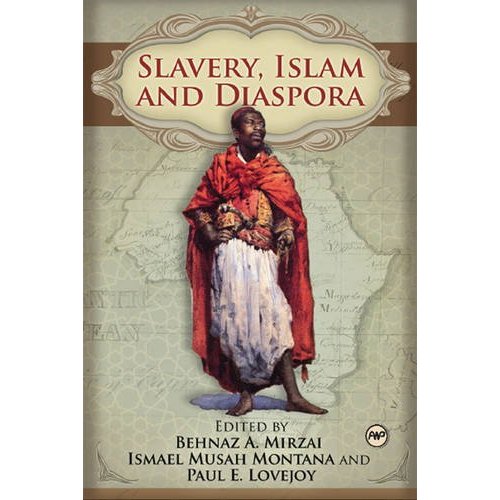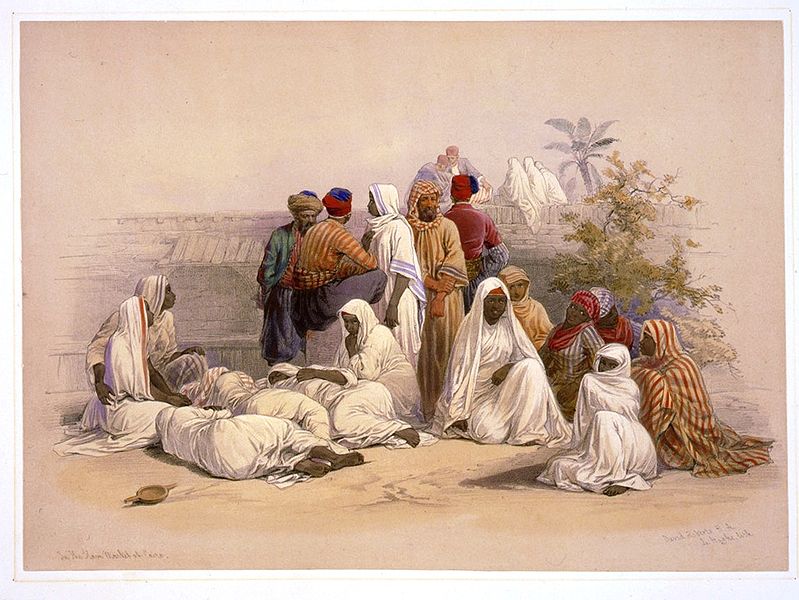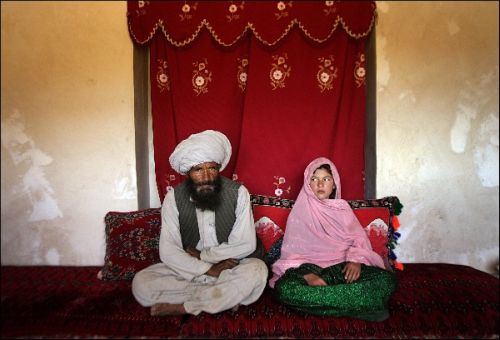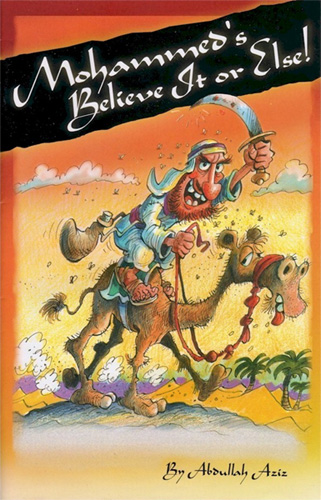The West is familiar with the history of slavery in the new world. It was sinful and terrible, and it lasted for several hundred years. And it was abolished mainly through the efforts of Christians in England such as Wilberforce and Clarke and in America through the Abolitionists who were primarily Protestant. However, few people in the West know about Islam and slavery. Most would be surprised that Islam authorizes the taking of slaves as spoils of war. From the days that Muhammad drew his sword to rob and conquer non-Muslims to this very day, Muslims have been taking non-Muslims, and even other black Muslims, as slaves.

''Slavery, Islam and Diaspora explores slavery in the context of the Muslim world through a study of the African Diaspora. The volume identifies the enslaved population as a distinct social stratum in Islamic societies and reflects on the ways Islam has been used to justify enslavement, liberate slaves, and defend the autonomy of communities. Local perceptions of Islam are shown to have strongly influenced the way people understood slavery.''
Muslims were enslaving black Africans long before any slave ships sailed for the New World. Muslims were taking and making slaves all over the lands they had conquered. Later, when slave ships were loaded with black slaves, often, a Muslim slave broker had the human cargo all ready to go. American slavers rarely had to go into inland to capture slaves, they were already waiting there, courtesy of some Muslim ruler, and/or slave broker. In many cases, if the black slaves were not sent to the New World, they were sent to the Mideast to be enslaved by Arabs, or kept by other black Muslims as slaves. Slavery was such an integral part of life in all these African kingdoms; the Moslem faith, which they had adopted, did not question the institutions but only strengthened it.
”The attrition rate on the trans-Sahara crossing reached as high as a third, and sometimes even a half, of the captives. Many thousands left their bones in the sand or on the stony plains — grisly markers that go back into deepest antiquity, for the glorious Pharaonic civilization depended on slave labor, and blacks of the Sudan and Nubia rounded up in slave raids or captured in the chaotic aftermath of tribal warfare were transported across the desert to make their meager and despised but necessary contribution to the even running of society.

- ”In the Arab world – the Wahhabi system (Saudi Arabia) for example – did not favor economic and social development through the hard work of its inhabitants. It condemned them to an endless need for servile labor furnished by the Negro trade. Moreover, for an Arab of those times, a man is never poor so long as his neighbor possesses something. The Holy War came in handy, if you wanted to become rich.”
Eyewitness reports of slave caravans across the desert left many a grisly portrait. Dozens of them remark on the unnerving silence of the passing throng: the grumbling of camels, and the plodding of human feet, but never the crack of whips, never screams from the victims or curses from the slavers. There had been no need for whips, for the poor benighted slaves knew that laggardliness meant certain death. If one stumbled and fell, the other slaves would try to support him, or the slave masters would cut off his head and there would be an open neckband in the chain, a horrid reminder to the weary.” ( From Sahara: A Natural History Marq de Villiers and Sheila Hirtle ©2002, Walker & Co.)

Samuel Gamble 1793. ''Historical records show that Islam and Christianity played an important role in enslavement in Africa. The Arab-controlled Trans-Saharan slave trade, which was underpinned by Islam, helped to institutionalise slave trading on the continent. And during the age of exploration, European Christians who approached the continent via the north witnessed caravans loaded with Africans en-route to the Middle East. Others arriving much later in West Africa observed indigenous African slavery, leading them to assume that African enslavement was inherent in the continent.''
There were many eyewitness accounts by Captain Lyon of slave caravans which he accompanied from Murzuq to Tripoli, himself attending on many of the girls and children who were left to die on the road by their Arab masters. he was always amazed at the gaiety and good humor of these survivors who had managed to complete a journey after months of traveling across the desert. None of the slave owners ever moved without their whips, and many were perpetually flogging their poor slaves. When a salve died, the master usually suspected there must must have been something ”wrong inside”, and regretted not having liberally applied the usual remedy of burning the belly with a red hot iron.

- Africa had a long history of slavery, but until the early 16th century this was only on a relatively small scale. Before this, most people who were enslaved were taken as prisoners of war or as a punishment for crime. Some were sold to Arab traders who sold them on as servants for a profit. The situation began to change when Europeans started to visit the coasts of Africa.
”Many of the children were carried in leather bags, which the Tibboo make use of to keep their corn in; and in one instance I saw a nest of children on one side of a camel, and its young one in a bag, hanging on the other. The Arabs brought many asses and sheep from Borgoo: the former are very large and fine, and arrived in high condition, whereas the horses and camels were skeletons. I here had an opportunity of seeing the manner of chaining the prisoners. Five Wajunga men, fierce, well made, handsome people, about 25 years of age, were linked together. The right hand is fastened to the neck, round which is an iron collar, having two rings in the back; through this the heavy chain is passed and locked at each end on the unhappy slaves. The owner sleeps with this chain tied to his wrist, when in fear of their escaping. I was informed by their masters, that these men had been so confined during three months, “because they were fierce fellows, and had actually resisted their captors; but above all, they had been guilty of endeavouring to make their escape when taken.” Their cowardly owners dreaded them even in Fezzan. These were the only strong young men in the Kaffle; almost all the other males being little boys, or infirm old men.”
Thus, for more than ten centuries, the African captured in the villages and forests of central Africa, was the currency and medium of exchange; the cornerstone of the Saharan economy; first, because it was he who worked the oases and the salt mines, and secondly, because he helped to provide the Saharan tribes with a ”raison d’etre” . This was the convoying of the slave caravans across the desert. The particular Saharan tribe that has ruled the desert, perhpas even from Carthaginian times was the Tuareg or ”Veiled Men” It is possible these people are the direct descendants of those nomadic tribes which inhabited the Garamantian kingdom in Greek and Roman times; a nation whose culture and language had survived relatively unchanged since classical times.
People who have visited these Tuareg settlements, especially if they have a connection with the outside world, have remarked on their visual proof of ”other worldliness”. Black tents, blue ceremonial gowns, all veiled, and what was visible of their faces stained purple by the dye of the veil. The most striking characteristic, was the curious combination of impassivity and ferocity in their dark, partly bloodshot eyes gazing unblinking through the slit of their veil. Chiefs who spoke not a word, and make no sign or gesture of either friendliness or hostility in response to any stimulus; no recognizable human expression in their regard. Their manner and posture being strictly ritualistic. It becomes very obvious that they belonged to another world altogether with no common denominators; experience, language and possibly human emotions. An outsider’s presence being tolerated as part of the courtesy of the desert.
”In his address to the British and Foreign Anti-Slavery Society in London in 1888, Cardinal Lavigerie referred to the situation: “The Tuaregs are the most frequent purveyors of these troops of human beings. Their hearts are as hard as the iron of their lances, and a handful of raw sorghum each evening, with a drop of water, are all that they give to the Slaves who travel, carrying the horrible Slave yoke. If anyone falls it is instant death – the experienced eye of the merchant can judge whether his victim is likely to escape from him by death before the end of the journey. If he feel sure of this, he finishes him off with one blow of his club – the hyenas and the jackals will come and devour their flesh, leaving blanched skeletons to mark the road to the markets of Morocco or Fez.”…For three weeks Adrien remained in a Tuareg encampment and after t
was sold to slave traders in Timbuktu for a jug of salt. The Arab who bought him put him in a sack and took him on a trek of over 1,100 miles to Metlili in Algeria. However during the journey he was sold to another Arab, with whom he completed the journey and found himself in Metlili. In his old age Adrien recollected that he was reasonably treated.

English: Picture of a print from David Roberts' Egypt & Nubia, issued between 1845 and 1849. Date 1848 Source Illus. in: Egypt & Nubia / from drawings made on the spot by David Roberts; lithographed by Louis Haghe. London : F.G. Moon, 1846-1849, v. 3, p. 27. Library of Congress, Reproduction number LC-USZC4-4043
”Yes, Islam’s problems are entirely self-inflicted. Modern European civilisation (otherwise inaptly named “the West”) has not provoked the baseless antagonism of a culture that wore itself out in wars of aggression starting in the 7th century. Even the Crusades and the Reconquista were in response to previous Muslim expansion. Bloody conquest, genocide, oppression, slavery, piracy… Islam has fostered them all, too, just like about every other culture on Earth. Its incessant internal atrocities prevent it from being even more vicious towards everybody else.
Contrary to Muslims, Europeans learn from their many mistakes. European civilisation was the first ever to voluntarily abolish slavery, something that the Islamic world has done only late in the last century, grudgingly, under pressure and not completely. Islam thrives in slavery, it is at the core of its holy book and the Arab names starting in “Abd…” mean “a slave of…”, like in “Abdelsalam” or “a slave of peace”. How much more contradictory can that be? The concept behind it is that dedication only comes through abject obedience.
Islam is a religion that expands by being imposed and the penalty for leaving it is death. I cannot imagine something like the Enlightenment and the Industrial and Scientific Revolutions ever happening under Islam.”

''There is plenty of blame to spread around for these problems. All sides and parties play a role. And I believe that you should be free to critique both the feeble US-led reconstruction effort and aspects of Afghan society that have been warped by decades of war and poverty (nobody wants to sell/marry off their 11-year old daughter). Those who have tried to stifle the debate on women’s rights in Afghanistan are a shameless bunch, far more shameless than those who have used the issue for other agendas (i.e., Hawks who discovered women’s rights in September 2001). It’s hard to talk about women in Afghanistan without being accused of being a neo-colonial racist or an enabler for the neocons.''
”A comparison of the Islamic slave trade to the American slave trade reveals some interesting contrasts. While two out of every three slaves shipped across the Atlantic were men, the proportions were reversed in the Islamic slave trade. Two women for every man were enslaved by the Muslims. While the mortality rate for slaves being transported across the Atlantic was as high as 10%, the percentage of slaves dying in transit in the Trans Sahara and East African slave trade was between 80 and 90%!
While almost all the slaves shipped across the Atlantic were for agricultural work, most of the slaves destined for the Muslim Middle East were for sexual exploitation as concubines, in harems, and for military service. While many children were born to slaves in the Americas, and millions of their descendants are citizens in Brazil and the USA to this day, very few descendants of the slaves that ended up in the Middle East survive.
While most slaves who went to the Americas could marry and have families, most of the male slaves destined for the Middle East were castrated, and most of the children born to the women were killed at birth.
Slaves in Africa – in the early 20th century. However, at least 28 million Africans were enslaved in the Muslim Middle East. As at least 80% of those captured by Muslim slave traders were calculated to have died before reaching the slave markets, it is believed that the death toll from the 14 centuries of Muslim slave raids into Africa could have been over 112 million. When added to the number of those sold in the slave markets, the total number of African victims of the Trans Saharan and East African slave trade could be significantly higher than 140 million people.”











 COMMENTS
COMMENTS



